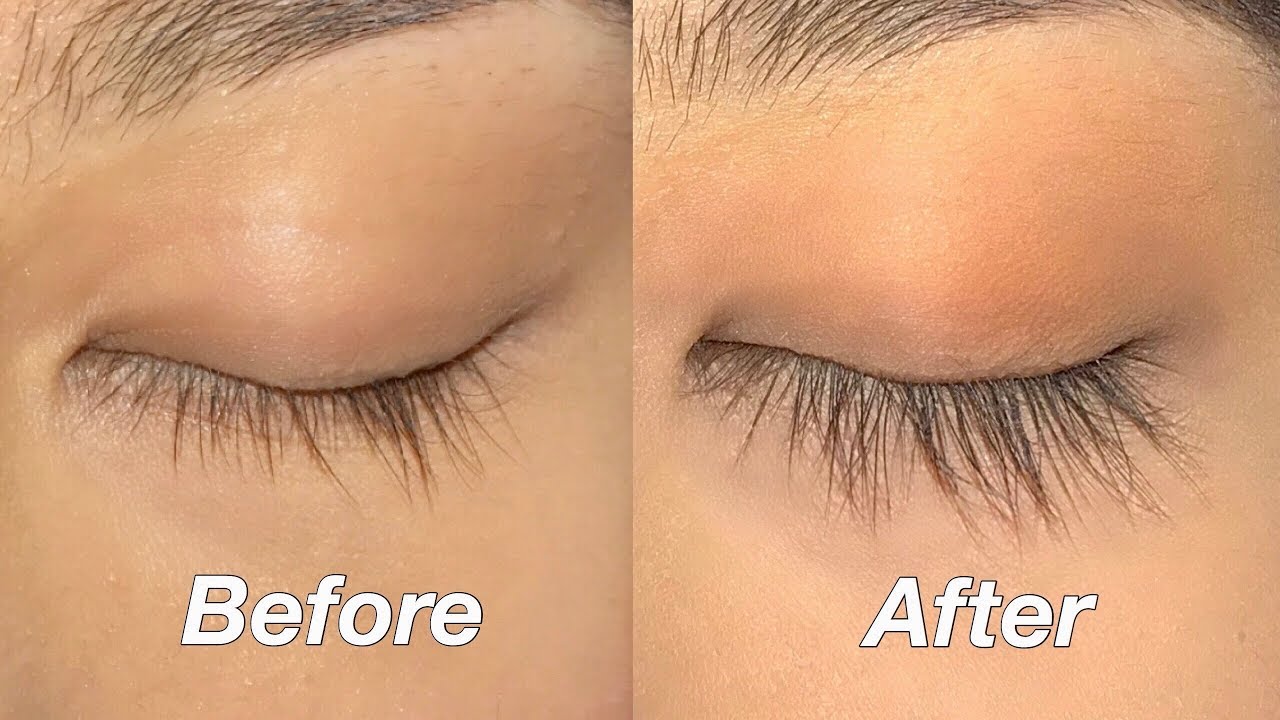Tears have always symbolized emotion, purity, and release. But recently, an unusual question has flooded social media and beauty forums: does crying make your eyelashes longer?
The claim sounds poetic the idea that tears might nurture beauty yet science paints a different picture. This guide explores the biology, myths, and real methods to improve lash growth, using factual insights from dermatology, ophthalmology, and trichology.
1. The Origin of the Crying Myth
The belief that crying helps eyelashes grow longer has existed for decades.
Beauty bloggers, short-video creators, and even ancient folklore have associated tears with rejuvenation. The logic stems from visible observation: after crying, lashes often appear darker, glossier, and thicker.
But this perception is optical, not biological. Wet lashes catch light differently and clump together, creating a temporary illusion of length. In truth, no clinical evidence supports that tears extend or thicken lash hairs.
2. Understanding Eyelash Biology
The Structure of Eyelashes
Eyelashes are terminal hairs that grow on the eyelid margins. Each lash grows from a follicle rich in keratin-producing cells and tiny sebaceous glands that secrete oil to protect the lash shaft.
-
Upper eyelid: 90–160 lashes per eye
-
Lower eyelid: 70–90 lashes per eye
-
Average length: 7–10 mm
The Lash Growth Cycle
The lash follows a three-phase cycle:
-
Anagen (Growth Phase): Lasts 4–8 weeks. Determines final length.
-
Catagen (Transition Phase): Lasts 2–3 weeks. Follicle shrinks and detaches from the blood supply.
-
Telogen (Resting/Shedding Phase): Lasts 3–4 months. Lash falls out and new one begins.
Genetics, hormones, and nutrition define the duration of each phase. Once the lash reaches the end of the anagen stage, it cannot grow longer naturally without stimulation from chemical compounds like prostaglandin analogs (used in some lash serums).
3. The Role of Tears in Eye Health
Tears are essential for ocular health, but their main purpose is protection, not growth stimulation.
Types of Tears
-
Basal Tears: Constantly lubricate the cornea and maintain comfort.
-
Reflex Tears: Emerge from irritants like dust, smoke, or onions.
-
Emotional Tears: Triggered by feelings of sadness, stress, or happiness.
Composition of Tears
Tears consist of three layers:
-
Water (Aqueous layer): Hydrates and removes debris.
-
Oil (Lipid layer): Prevents evaporation.
-
Mucus (Mucin layer): Helps tears spread evenly.
They contain electrolytes, lysozymes, and proteins but lack hormones or compounds known to trigger hair growth. Hence, crying cannot biologically lengthen eyelashes.
4. Why Does Crying Make Your Eyelashes Longer
After crying, many people notice their lashes look longer or fuller. This is due to visual contrast and temporary effects.
-
Wet lashes clump, making them look darker.
-
Swollen eyes may cause lashes to curve upward slightly.
-
Reflected light creates a shadow that emphasizes lash edges.
These effects fade once tears evaporate. In some cases, frequent crying can actually weaken lash follicles if the eyes are rubbed aggressively or exposed to salt and bacteria from dried tears.
5. Scientific View: Can Tears Influence Hair Growth?
From a biological standpoint, hair growth requires three elements:
-
Active follicle cells
-
Adequate blood flow
-
Hormonal or molecular stimulation
Tears do not supply these. They have trace minerals like sodium and potassium but lack growth factors such as fibroblast growth factor-7 (FGF7) or vascular endothelial growth factor (VEGF) that stimulate follicular activity.
Dermatological literature confirms no correlation between tear exposure and follicle regeneration. Eyelash follicles remain unaffected by external tear contact because the follicle lies beneath the skin, insulated from surface fluids.
6. Damage Risks from Excessive Crying
Although crying itself is natural, frequent or harsh crying can indirectly harm lashes:
-
Rubbing Eyes: Physical friction can loosen or pull lashes.
-
Makeup Breakdown: Mascara mixed with tears becomes abrasive.
-
Salt Crystals: Dried tears leave salt residue that irritates follicles.
-
Inflammation: Repeated rubbing may cause blepharitis (eyelid inflammation).
Long-term irritation can shorten the lash growth phase and cause thinning. Thus, if crying is frequent, cleaning the eye area gently with sterile wipes helps maintain lash integrity.
7. Real Methods to Promote Lash Growth
To enhance lash length safely, focus on science-backed methods:
1. Prescription Serums
-
Bimatoprost (Latisse): FDA-approved compound that extends the anagen phase.
-
Increases lash length by ~25% in 12 weeks under clinical supervision.
2. Over-the-Counter Peptide Serums
-
Contain amino acids and panthenol that strengthen lash shafts.
-
Improve density and prevent breakage.
3. Natural Oils
While not growth stimulants, oils such as castor, argan, or coconut coat lashes, reducing dryness and friction damage. Their fatty acids improve lash sheen and flexibility.
4. Nutritional Support
Adequate nutrition improves keratin synthesis. Key nutrients include:
-
Biotin (Vitamin B7)
-
Vitamin E and C
-
Zinc and Iron
-
Omega-3 fatty acids
5. Lash-Care Habits
-
Remove eye makeup gently using micellar water.
-
Avoid sleeping with mascara.
-
Use clean spoolies to brush lashes daily.
-
Replace mascaras every 3 months to avoid bacterial buildup.
8. Diet, Hormones, and Lash Cycle
Influence of Diet
Protein deficiency reduces keratin formation, leading to fragile lashes. Collagen peptides, eggs, lentils, and leafy greens support lash renewal.
Hormonal Factors
Hormonal imbalances, particularly involving thyroid or estrogen levels, can alter lash density. Conditions such as hypothyroidism or alopecia areata sometimes result in madarosis — lash loss.
Stress Connection
Chronic stress triggers cortisol production, shortening the anagen phase. Meditation, sleep regulation, and hydration indirectly support lash longevity.
9. Lash Serums, Treatments, and Safe Options
Professional lash treatments can enhance appearance without causing damage when applied correctly.
| Treatment Type | Description | Duration | Effect |
|---|---|---|---|
| Lash Lift | Semi-permanent curl using keratin or perming agents | 6–8 weeks | Lifts and opens eyes |
| Lash Tint | Dye applied to natural lashes | 4–6 weeks | Darkens lashes visibly |
| Lash Extensions | Synthetic or mink fibers glued to existing lashes | 2–4 weeks | Adds volume instantly |
| Growth Serum | Stimulates follicle cycle with peptides or prostaglandin analogs | Ongoing | True growth enhancement |
Caution: Avoid unregulated serums or homemade mixtures near eyes; they may trigger allergic or corneal reactions.
10. Preventing Lash Breakage
Healthy lashes depend on consistent gentle care.
Do’s
-
Use soft cotton pads for eye cleaning.
-
Moisturize lash line with mild ophthalmic gel.
-
Apply sunscreen around eyes to prevent UV damage.
-
Maintain regular eye-checkups if you use contact lenses.
Don’ts
-
Avoid waterproof mascara daily; its removal strains lashes.
-
Do not tug extensions or use unsterilized lash curlers.
-
Skip oil-based removers immediately after lash lifts.
Maintaining this regimen preserves natural lash health, regardless of crying frequency.
11. Myths vs. Facts Table
| Common Belief | Scientific Reality |
|---|---|
| Crying makes lashes grow longer | Tears lack growth-stimulating hormones or nutrients |
| Tears nourish lash follicles | Follicles sit below skin; tears cannot penetrate |
| Frequent crying strengthens lashes | Excess moisture and rubbing weaken follicles |
| Only genetics define lash length | Serums and nutrition can enhance natural potential |
| Oil application causes growth | Oils condition, but do not trigger new growth |
12. Best Lash Care Routine Checklist
To maintain optimal lash condition, integrate this daily plan:
-
Morning:
-
Cleanse eyelids with pH-balanced foam.
-
Apply lightweight peptide serum.
-
Comb lashes gently upward.
-
-
Mid-Day:
-
Stay hydrated; dehydration reduces sebum balance.
-
Avoid excessive eye rubbing when fatigued.
-
-
Evening:
-
Remove makeup completely using non-alcoholic remover.
-
Apply nourishing oil (castor or almond) lightly.
-
Sleep on your back to minimize friction against pillows.
-
Consistency in this cycle promotes longer-looking, healthier lashes without relying on myths.
13. Frequently Asked Questions
1. Do tears contain any growth hormones?
No. Tears are composed primarily of water, lipids, and mucins. They do not include prostaglandins or keratin-stimulating peptides responsible for hair growth.
2. Why do lashes look longer after crying?
Moisture causes lashes to darken and clump, giving the illusion of thickness and length. Once dry, lashes return to normal appearance.
3. Can crying damage lash extensions?
Yes. Saltwater from tears weakens adhesive bonds, causing premature shedding of synthetic fibers. Avoid rubbing or wiping extensions when emotional tears occur.
4. Does stress-related crying affect lashes differently?
Not directly. However, chronic stress elevates cortisol, which can shorten lash growth cycles and cause overall hair thinning.
5. What nutrients help lashes grow naturally?
Biotin, Vitamin E, Zinc, Iron, and Omega-3 fatty acids maintain follicle strength and elasticity, aiding sustainable growth.
6. Is castor oil scientifically proven to grow lashes?
Research remains inconclusive. Castor oil hydrates and protects, but lacks verified evidence for stimulating follicular growth.
7. How often do eyelashes naturally shed?
On average, 1–5 lashes fall daily per eye. Complete lash regeneration takes approximately 60–90 days.
8. Can hormones influence eyelash density?
Yes. Estrogen supports hair growth, while hormonal decline with age reduces lash density. Balanced nutrition and medical consultation can help.
9. Are there any side effects of lash serums?
Some users report redness or iris pigmentation from prostaglandin analogs. Always consult an ophthalmologist before use.
10. How to make lashes appear longer instantly?
Use a lash curler followed by volumizing mascara or get a lash lift. These cosmetic methods enhance visibility without altering growth.
See More: Does Ketamine Therapy Get You High? A Clinical, Clear, and Complete Guide
Gyms With Childcare Near Me: The Definitive 2025 Guide for Parents
Conclusion
Crying is essential for emotional and ocular health but it does not make your eyelashes longer.
Scientific evidence shows that tears contain no compounds capable of altering hair follicles. Any observed lash change after crying results from optical illusion, not growth.
For truly longer and healthier lashes, depend on nutritional balance, safe serums, and gentle care. The myth of tear-induced lash growth belongs in the realm of internet fiction, not dermatological fact.

